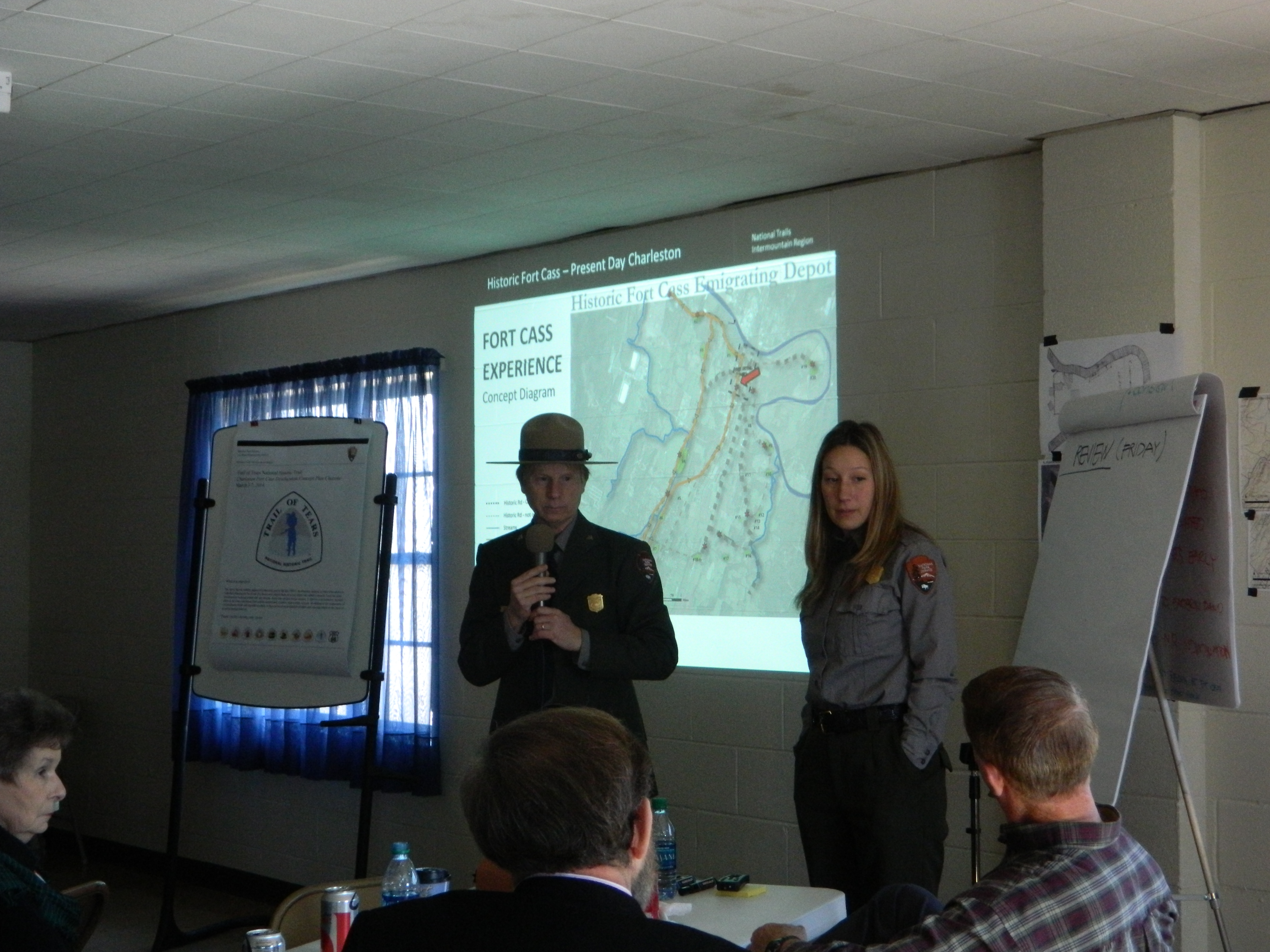 National Parks Services Trails Division representatives Steve Burns Chavez, left, and Cori Kolisko, address questions about proposals for interpreting and experiencing the significance of Fort Cass, which served as the key center for the removal of the Cherokee Nation in the late 1830s. The old fort and its associated camps, decommissioned and deconstructed after those operations, were located where Charleston, Tenn. stands today.
National Parks Services Trails Division representatives Steve Burns Chavez, left, and Cori Kolisko, address questions about proposals for interpreting and experiencing the significance of Fort Cass, which served as the key center for the removal of the Cherokee Nation in the late 1830s. The old fort and its associated camps, decommissioned and deconstructed after those operations, were located where Charleston, Tenn. stands today.CHARLESTON, Tenn. - An audience of 50 historical preservationists and local residents met with federal park officials Friday to determine the best alternatives for interpreting "the Fort Cass experience."
Fort Cass, which served as the key center for the removal of the Cherokee Nation to Oklahoma in the late 1830s, was within the boundaries of modern-day Charleston.
Efforts to preserve that tragic story are a way to remember the Cherokee people who lost their homes -- and even their lives -- on the Trail of Tears, said Faye Callaway, a member of the Charleston-Calhoun-Hiwassee Historical Society.
Representatives with the National Parks Service Trails Division presented both large-scale and small-scale visions on how to tell the stories associated with Fort Cass and the Trail of Tears.
The larger proposal would incorporate a driving tour and wayside pullovers and signs.
"It's kind of like a battlefield landscape in scale," said Steve Burns Chavez, a parks service landscape architect.
Earlier in the week, the federal park officials had met with stakeholders to identify potential sites of interest, using maps, documents and other data. The fort and its associated structures, which included a Cherokee cantonment, made up a 12-mile area.
Going on the road to find these places was a "profound experience," said Cori Kolisko, a park service official.
Using military records and digital overlays of period maps, the park officials traced the routes that U.S. soldiers would have taken as they patrolled the area, they said.
During those journeys, they found the spring that served as a well-documented water source for the fort and remnants of a stone roadbed, Kolisko said.
Chavez said a smaller-scale walking tour that would incorporate a heritage-themed greenway is another option.
The visitors' walk down the trail can be used to evoke a feeling of the Cherokee Removal through storyboards using the images and words of historical figures who played roles on either side of the tragedy, he said.
"These won't be our words, but theirs," Chavez said.
Interpretive efforts will incorporate the Hiwassee River Heritage Center, which the historical society opened in May 2013.
The center will serve as a gateway to other cultural and historical heritage sites, said Melissa Woody, vice president of the visitors and convention bureau of the Cleveland/Bradley Chamber of Commerce.
Paul Leach is based in Cleveland. Email him at paul.leach.press@gmail.com.
